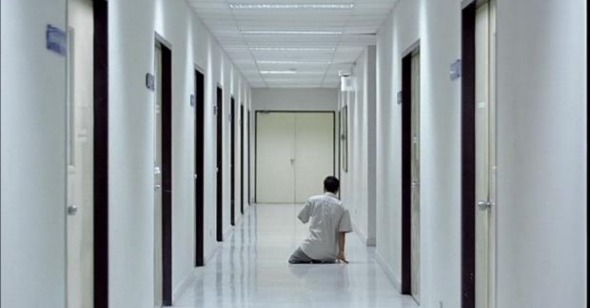Despite the tortured self-analysis some critics feel the need to use as ostensibly humbling preface for their top tens, at Reverse Shot we’re thankful for best-of-year round-ups—we savor any chance we get to reiterate our love for films that might not have had the benefit of a massive marketing team behind them. Pitting the year’s best films against one another in a top-ten list may seem like an arbitrary comparison of national cinemas, moods, genres, and political statements, but it doesn’t necessarily invalidate the act.
Furthermore, is compiling top tens really so arbitrary that we should include thirty-year-old films along with new ones? For that very reason Reverse Shot has always banned reissues and rediscoveries from our year end “election”—this is a conscious political choice meant to better skew our lists towards the requirements of the present. (We’d wager our selection criteria aren’t really all that far advanced from what the majority of Americans use to choose leaders—in the end we’re all trying to reconcile immediate needs and concerns while keeping an eye towards posterity.) We don’t mean to suggest that Killer of Sheep (or Army of Shadows, a consensus favorite from last year) has nothing to offer the present moment—it surely does, and the film would have placed highly had we included it—but what these older films say to us “now” is always mediated by what the films tried to say to their lost “thens.”
As usual, we polled our major contributors and staff writers, with the highest ranked film receiving the most votes, and the rest in descending order. An exciting line-up of daring movies, the resulting top ten stretches from Thailand to Portugal, with a few American pit stops in between. Here’s hoping 2008 brings as much daunting, challenging cinema.
[Capsules by Michael Koresky, Kristi Mitsuda, Nicolas Rapold, Jeff Reichert, Michael Joshua Rowin, Andrew Tracy, Elbert Ventura, and Chris Wisniewski]
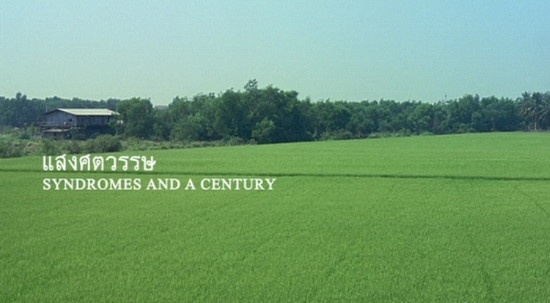
1. Syndromes and a Century
It must sound insufferably pretentious and difficult to the uninitiated: we see two doctors, a man and a woman, meet in a rural hospital and then go about their daily lives; halfway through the film, we watch their initial meeting again, except the setting has changed to something modern, sleek, and urban. Scenes, images, and characters from the first half of the film continue to recur in its second half, more as echoes than mirror images. Syndromes and a Century, like Thai master Apichatpong Weerasethakul’s last film, Tropical Malady, is a half-told love story twice told. But if it sounds like a movie only a critic could love, it plays like something entirely different—funny, light on its feet, and delicately human. More a journey for the heart and the senses than a puzzle for the head, Syndromes demands that we let go of our need for everything in a movie to make sense and surrender ourselves to its sublime, mysterious beauty. In return, this strange and astonishing art work offers nothing less than the most joyful, rapturous moviegoing experience of the year. —CW
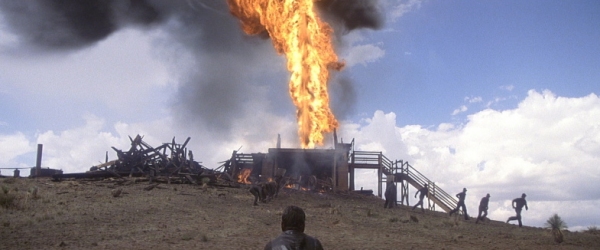
2. There Will Be Blood
Right now, the critical community may be falling all over itself to find the appropriate superlatives for Paul Thomas Anderson’s devilish, newly forged film frontier, but the real winners will be those who discover the film as it gradually rolls out over the next few months, years, even decades; whether or not it passes or fails as viable multiplex entertainment, There Will Be Blood will remain ripe for wrestling, discussion, and giddy bafflement for generations to come. To all the naysayers who think the outlandish praise is generous at best, it must be stated that the response says less about the film itself than the way film criticism has changed: in the mad dash for instant response, everyone wants to be the first to notice genius. And anyone who knows anything about filmmaking knows there’s genius here: in the rattling extremes of hush and fury, in the gripping visual discordance between Daniel Day-Lewis’s beanpole behemoth Daniel Plainview and Anderson’s horizontal widescreen glories, in the elegant time jumps and abstract cacophonies. To say that Anderson is merely patching together his greatest movie hits (Scorsese, Altman, Malick, zzzzzz....) is like condemning Fassbinder for reappropriating Sirk or dismissing Chinatown for “riffing” on noir. There Will Be Blood needs to be measured on its own terms—and it’s thrillingly, beguilingly, oddly huge, not to mention the year’s most effective political American film. —MK
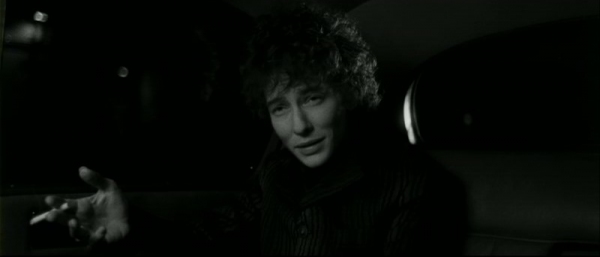
3. I’m Not There
Don’t Look Back, Eat the Document, Alias in Pat Garrett and Billy the Kid, Masked and Anonymous—as these titles announce, I’m Not There is not the first movie to frame Bob Dylan in terms of negation and shape-shifting. Much as Far from Heaven inhabited and reworked melodrama, Todd Haynes’s latest work of creative reenactment extensively cites and quotes Dylan’s own poses and words (skim a book of Dylan interviews or an Eat the Document bootleg to see just how much). But while this performed pastiche has obsessed both proponents and detractors, I’ll say it again: I’m Not There actually comes alive through the frisson and the nuance of its personalities, like Carl Franklin’s wise boy wonder, Christian Bale’s overgrown, long-gone evangelist, or the grounded, reverse-shot presence of Charlotte Gainsbourg. It’s possible to imagine other I’m Not Theres, even to long for the astringency of Peter Watkins’s Edvard Munch, but Haynes’s movie made for one of the year’s most engaging experiments. —NR
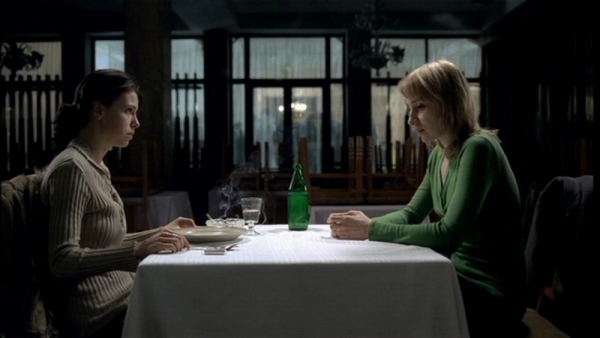
4. 4 Months, 3 Weeks, and 2 Days
The unlucky triumvirate of Juno, Waitress, and Knocked Up, in which unwanted and highly problematic pregnancies are undertaken with casual can-do and a beauty-of-unborn-life attitude that, however unintentionally, plays into the hands of pro-lifers, only makes the necessity of Cristian Mungiu’s Palme d’or–winner all the more apparent. Even more exciting, Mungiu creates not a reducible tract on a specific social problem but an expansive, humane look at the limited avenues of women in Ceausescu-era Romania, and a cathartic, expertly crafted drama about the self-preservation of desperate alienated people. Forget the film’s much argued “money shot” (though, admittedly, it’s hard to) and marvel over how Mungiu stages a simple single-take dinner scene that’s as tense as any of Javier Bardem’s devil’s bargains or Zodiac’s dead-end interrogations, or how, most importantly, Mungiu allows his main actress, the spellbinding Anamaria Marinca, to intuitively feel out situations so dramatically fraught they would give Daniel Plainview heart palpitations. —MK
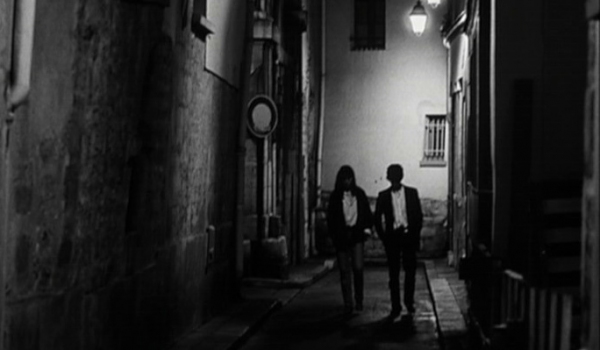
5. Regular Lovers
Philippe Garrel’s ode to May ‘68 and the long morning after forgoes the simplistic tactics of celebration, condemnation, or exploitation for an austere yet tender depiction of his youthful, would-be revolutionaries. Garrel’s penchant for the mythological undoes the cultural mythmaking that surrounds the French May and brings it into the present tense, even as he hearkens back to the archetypal Ur-forms it sought to emulate, in the charmingly straight-faced fantasy sequences wherein 20th century youth transmute into 18th century sans-culottes. This forthright parallel has less to with the ideology of the event than its emotion and, one might say, its magic—as well as that of film itself, which the director has long ingenuously regarded as a transparent window into the psyche and the soul. Garrel’s striking horizontal compositions and William Lubtchansky’s ethereal black-and-white cinematography not only create a remarkable texture of cut-rate authenticity but also evokes the fantastical element inherent in the medium itself. The use of irises, jump cuts, and white flare-outs are not cute devices but evocations of cinema’s beginnings in all its alchemical innocence, which Garrel aligns with the naive beauty of his young protagonists. Though relentlessly clear-eyed and free of self-flattery, Garrel’s vision of ‘68 is not a tale of historical defeat but eternal recurrence, a paean to youth that views it as a well to ceaselessly return to rather than a moment to be irretrievably lost. —AT
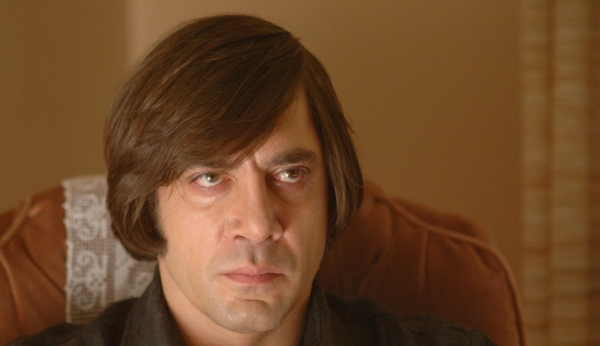
6. No Country for Old Men
After a recent run of comedic duds, Joel and Ethan Coen have with No Country for Old Men returned to their strength—noirish stories suffused with offbeat detail and a sly subversion of generic pleasures. This time the pleasures the Brothers provide in their meticulously and laconically constructed set pieces, featuring macho men dueling it out with hunters’ acumen, are undermined by a faithful and genuine visual approximation of Cormac McCarthy’s novelistic dread. It’s been a long time (Miller’s Crossing) since the Coens have tilted in the direction of seriousness rather than irony in regard to their characters. Like little else currently showing, No Country for Old Men struggles almost religiously with the specter of violence and the inevitability of chaos, ennobling characters who are left, like its audience, to face the void with no false and condescending sense of succor. —MJR
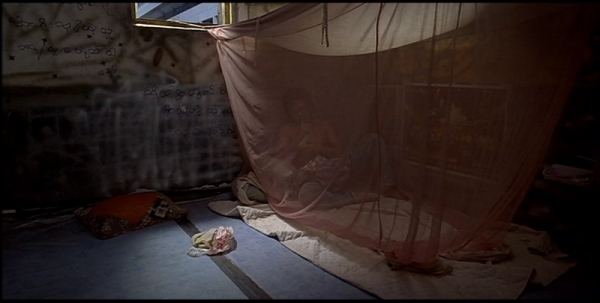
7. I Don’t Want to Sleep Alone
A companion piece and rejoinder to his unfairly dismissed relationship drama-cum-porn musical The Wayward Cloud, I Don’t Want to Sleep Alone finds Tsai Ming-liang in a quiet and tender place. And I mean “quiet” quite literally: in dual roles (one, as a comatose patient, the other as a homeless man) the film’s star and Tsai regular Lee Kang-sheng has little to say but a vast emotional terrain to navigate in this, Tsai’s first film set in his native Malaysia. It’s no exaggeration to assert that Tsai may have the most rigorous command of framing and mise-en-scène of any director working in the world right now, and I Don’t Want to Sleep Alone offers ample evidence to support the claim, from its first frame to its breathtakingly exquisite last shot. Here is a story of longing and alienation, loneliness and desire, told with little more than a mattress, some gas masks, and a funny little lamp. It’s pure filmmaking—the kind that simply defies words. —CW
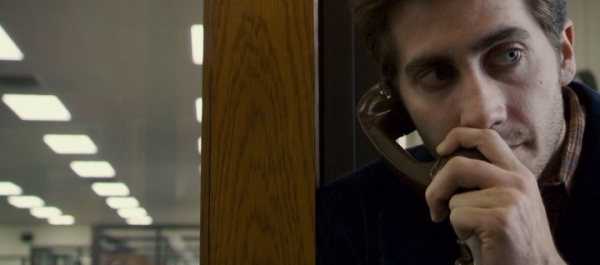
8. Zodiac
Who knew the director of kinetic disturbances like Seven and Fight Club was capable of such profound restraint? In the unshakably haunting Zodiac, David Fincher subdues that trademark visual virtuosity honed through years of making music videos to devastating effect. Aided by the beautiful, textured digital cinematography of Harris Savides, the director’s stylistic shifting of gears imparts his period piece a perfectly suited atmosphere of dread. Tracking the ultimately stymied, decades-long search for the eponymous murderer, Zodiac exhilaratingly frustrates the impulses latent in its composite construction of serial killer/backstage newsroom/police procedural genres at every turn. In place of action-packed set pieces, it leaves room for existential contemplation, and real-life letdown replaces cathartic takedown: Zodiac upends Dirty Harry mythology, and turns the psychological profile of the studio epic on its head. The successive defeat of the three perfectly cast potential heroes—the newspaper cartoonist (Jake Gyllenhaal), journalist (Robert Downey, Jr.), and chief investigator (Mark Ruffalo)—unravels in a manner that shocks even if you know the string of murders remain among the most famous of unsolved crimes. There’s no one to save the day here, and Fincher, in sticking closely to the facts, and refusing to provide the audience either cheap thrills or closure, creates as breathtakingly uncompromised a vision as American cinema has seen. —KM
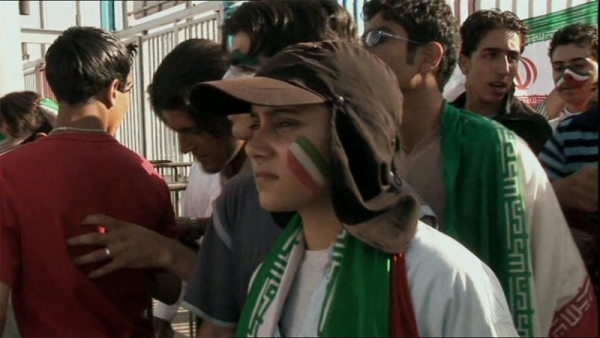
9. Offside
Nothing against Marjane Satrapi’s Persepolis, but let’s face it: it’s a depressing comment on the state of the foreign film—and Iranian cinema in particular—in the U.S that more people will have seen that slight charmer in a week than saw Jafar Panahi’s Offside in its entire run. It’s particularly galling because Offside is as close to a crowd-pleaser as the art house gets. This ingenious act of subversion follows a group of girls who try to attend a soccer match between Iran and Bahrain—a freedom denied women in the Islamic republic. Considering its portentous subject, Offside is miraculously dexterous, not to mention less despairing than its brilliant predecessors, The Circle and Crimson Gold. Panahi presents the standoff between the girls and their guards as less a dramatic showdown than a farcical joust of wits—with the male rubes completely overmatched. Shot digitally guerrilla-style, the movie cloaks its polemics in engrossing neorealism. Offside suggests a society united in tacit opposition to a repressive regime. Panahi ends it all with the year’s most euphoric coda, set amid the actual street celebrations following Iran’s victory, a riotous national party that hangs in the air like a promise. —EV

10. Colossal Youth
In a year of movie miracles large and small, Pedro Costa may have been responsible for the most astonishing in Colossal Youth: he stopped time. And then, for good measure, he sped it up, slowed it back down again, stretched as if it were putty, skipped it like a stone across a lake. His DV poem to Portuguese slum living, edited from hundreds of hours shot over years into a lyrical and lulling three-hour epic, flirts with narrative coherence, but culminates in the actualization of a new kind of film logic, one that draws equally from Robert Bresson’s harsh elisions and the concrete stasis of installation video. Colossal Youth demands we engage with it, but cares little if we do so by vigorously grappling with its knotty strands, walking out in frustration, or simply closing our eyes and letting the ambient sound carry the experience. (Maybe we should call it this year’s Inland Empire.) What happens in Colossal Youth? Not much, and a great deal. Thankfully Costa’s located the striking non-actor Ventura and placed him as our avatar—finding one’s way through this physical and intellectual labyrinth isn’t an easy prospect. But then, ease of operation shouldn’t be what we look to great art for. With Ventura leading, Colossal Youth takes us to places most Western critics probably don’t even know they wouldn’t want to visit, and the film is valuable for that, but more so for paving a path forward for high art cinema in the digital age. I’m guessing years, and many more Pedro Costa films, will pass before Colossal Youth winds its way to the light of broader approbation, but this is a film that certainly isn’t in much of a hurry to get anywhere. Vote for Pedro, indeed. —JR
